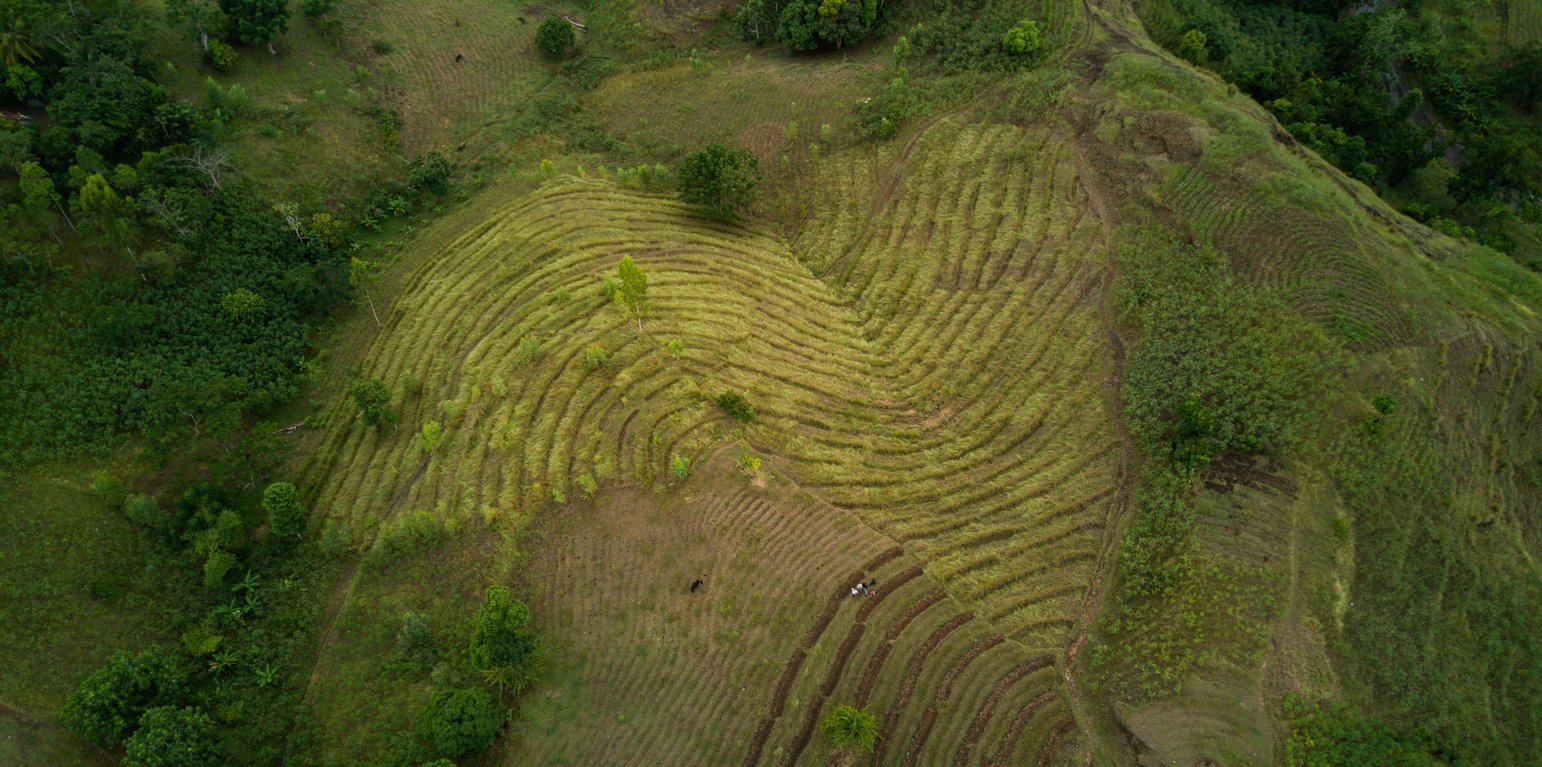



Vetiver hedges are applied to prevent degradation and increase slope stabilization on areas prone to erosion. In Haiti, the Swiss Red Cross (SRC) has used cross-slope vetiver hedges as a restoration measure where soil has been degraded by surface erosion. Terraces are progressively formed and these reshape steep-sloped terrain into a succession of platforms with little or no gradient. Over time, these areas receive deposits of sediments from upstream: these sediments are captured by the terraces. Vetiver grass is used to establish anti-erosive structures because it is a common, deep-rooted species that can also be cut and used as mulch. Below the vetiver hedges, fruit trees may be planted to better stabilize the soil and simultaneously improve food security. However, if the soil is too degraded, forest trees are an alternative as they are less demanding. Between the vetiver hedges, land users can cultivate crops. It is recommended not to plant root crops (potatoes, cassava etc) or even groundnuts, but rather to plant legumes that bear fruit above ground and fix nitrogen, and perennial crops. Vetiver may be cut and used for mulching on the terrace beds.
This technology has several on- and offsite benefits. Besides stabilizing slopes and reducing landslide risks, vetiver strips are proven to reduce and retain surface runoff in ditches just above the hedges. Therefore, rainfall water can infiltrate more easily and recharge groundwater. Another onsite advantage is the accumulation of fertile sediments on the terrace beds, which support cropping. Offsite benefits include downstream protection for communities and agricultural fields against landslides, floods and siltation. Despite these advantages, land users claim there is significant loss of arable area when applying this technology. Farmers tend to exploit their plots of cultivated land, and only apply vetiver terraces when the soil is completely degraded. This, however, means that the soil needs time to regenerate before it can be cultivated again. Therefore, although very protective, this technology is not necessarily productive immediately after its implementation on heavily degraded soil. Furthermore, the vetiver grass itself has little use for the land users. Although its roots contain aromatic oil that is highly sought after in the cosmetic industry, land users should not dig up vetiver roots as this would severely weaken the stabilizing function of the technology.
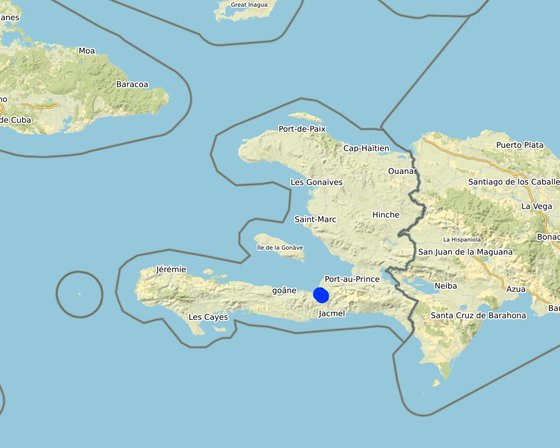
Location: Léogâne, Département de l'Ouest, Haiti
No. of Technology sites analysed: 10-100 sites
Spread of the Technology: evenly spread over an area (approx. 0.1-1 km2)
In a permanently protected area?: Nee
Date of implementation: 2014
Type of introduction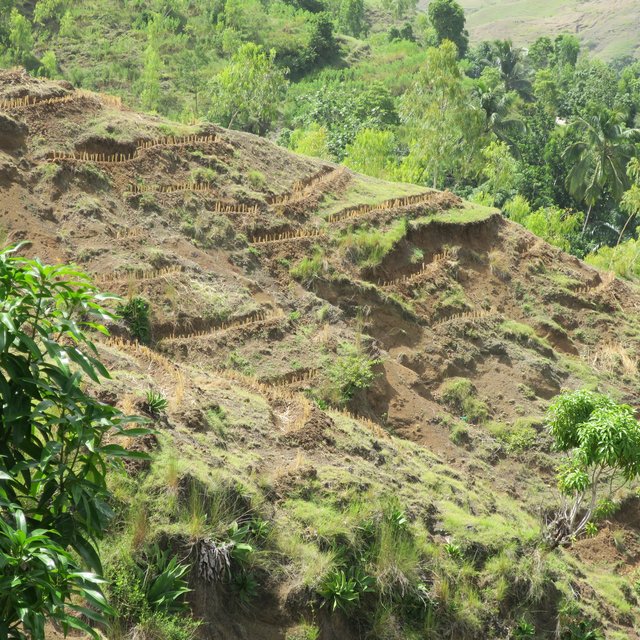
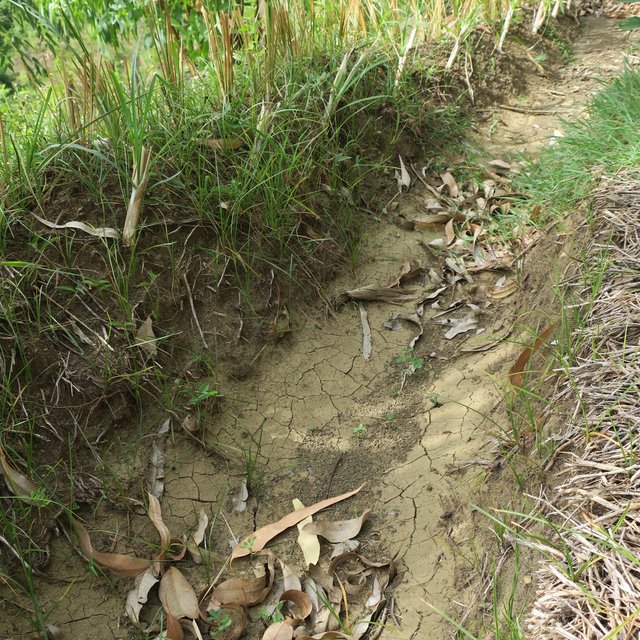







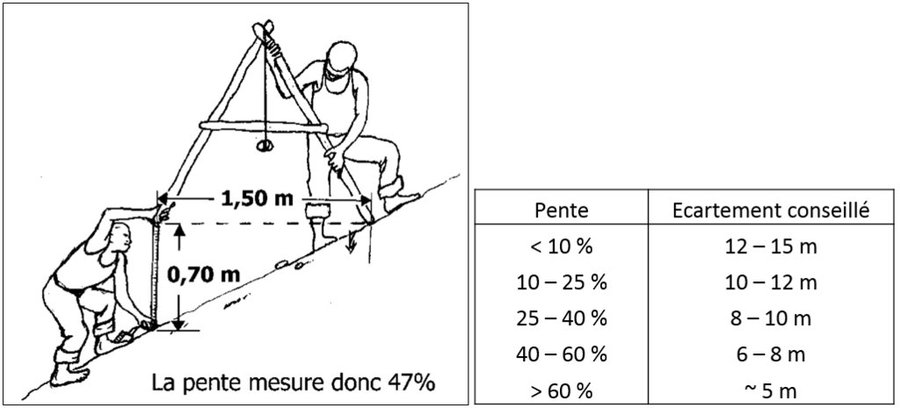

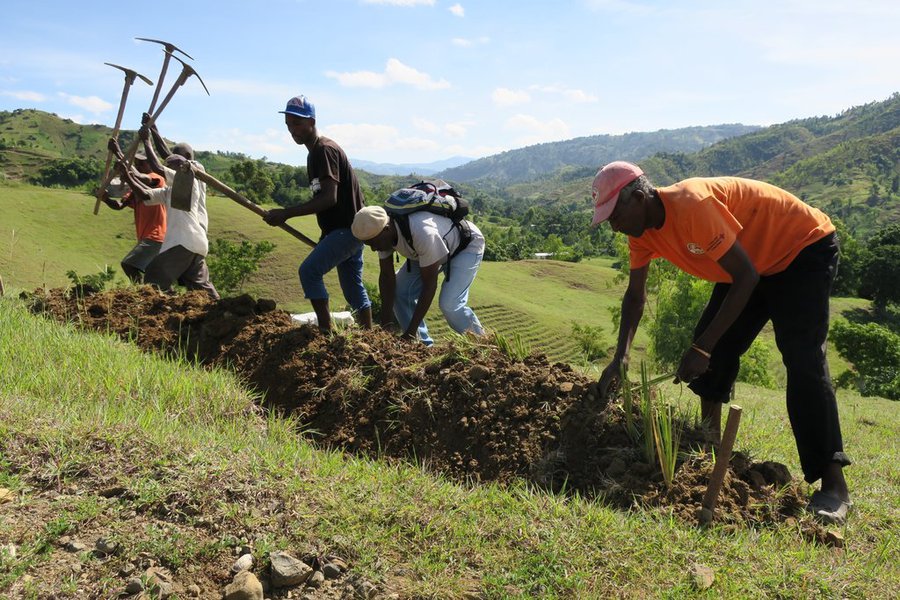
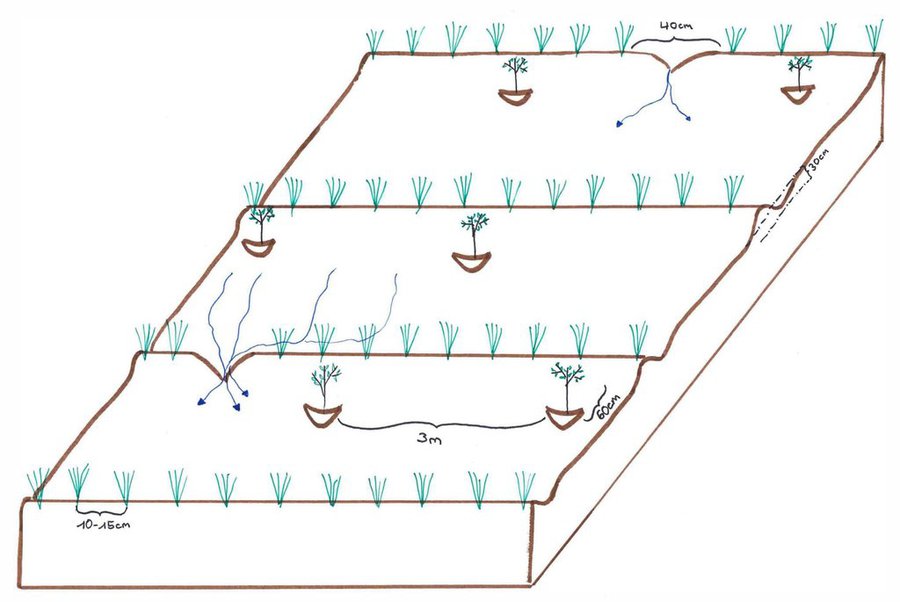
| Specify input | Unit | Quantity | Costs per Unit (HTG) | Total costs per input (HTG) | % of costs borne by land users |
| Labour | |||||
| Unskilled labourer | person-days | 20.0 | 200.0 | 4000.0 | 100.0 |
| Skilled labourer | person-days | 5.0 | 1000.0 | 5000.0 | |
| Equipment | |||||
| Machete | pieces | 1.0 | 5.0 | 5.0 | 100.0 |
| Pickaxe | pieces | 3.0 | 5.0 | 15.0 | 100.0 |
| A-level | pieces | 1.0 | 5.0 | 5.0 | 100.0 |
| Hoe | pieces | 5.0 | 5.0 | 25.0 | 100.0 |
| Plant material | |||||
| Vetiver grass | cuttings | 2000.0 | 2.0 | 4000.0 | |
| Trees | cuttings | 67.0 | 50.0 | 3350.0 | |
| Total costs for establishment of the Technology | 16'400.0 | ||||
| Total costs for establishment of the Technology in USD | 264.52 | ||||
| Specify input | Unit | Quantity | Costs per Unit (HTG) | Total costs per input (HTG) | % of costs borne by land users |
| Labour | |||||
| Land user and his family (monthly check, 1/2 day of work for 200m) | person-days | 6.0 | 200.0 | 1200.0 | 100.0 |
| Replanting dead cuttings and reparing ridges (2 times a year total 5 working days for 20 people) | person-days | 100.0 | 200.0 | 20000.0 | 100.0 |
| Equipment | |||||
| Hoe | pieces | 1.0 | 5.0 | 5.0 | 100.0 |
| Plant material | |||||
| Vetiver cuttings replaced after rainy season (5%) | cuttings | 65.0 | 2.0 | 130.0 | |
| Vetiver cuttings replaced after dry period (40%) | cuttings | 533.0 | 2.0 | 1066.0 | |
| Total costs for maintenance of the Technology | 22'401.0 | ||||
| Total costs for maintenance of the Technology in USD | 361.31 | ||||
When established on very degraded land, land users have to patient and wait the soil to recover. But in the long run agricultural production will increase.
When established on very degraded land, land users have to patient and wait the soil to recover. But in the long run crop quality will increase.
When established on very degraded land, land users have to patient and wait the soil to recover. But in the long run farm income will increase.
When established on very degraded land, land users have to patient and wait the soil to recover. But in the long run food security will increase.